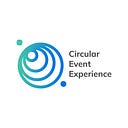How IKEA is leading the circular way
In the race to become net-zero by 2030, some companies are committing to decoupling growth from the consumption of finite materials and building a sustainable world for future generations. Whilst others appear to be in survival-mode or just carrying on as usual. What is needed at this stage of building back a better world is a collaborative approach and recognition of proven ways that can bring businesses closer to net-zero.
From buying back furniture during Black Friday to setting up second-hand stores giving their furniture a new lease of life, IKEA is leading the way into the future. They’ve been a transformative force ever since their humble beginnings (during WWII, founded by a farmer’s son) and there’s no sign of slowing down yet.
Jaspen Broden, CEO, IKEA, shared his view on the matter at Davos this year:
“There is a great misunderstanding around the world that being climate positive must come at a premium or that it will only be within reach of the few. But it’s actually the opposite.”
The ambition is to become climate positive by 2030 where all parts of IKEA’s operations, from the forest, industry, transportation, and retailing are 100% renewable or recyclable. This mindset is all about long-lasting solutions where using raw materials is still ok as long as the materials are renewable and part of a climate-neutral value chain.
Here are the three circular initiatives they’re winning at:
Values-based leadership and vision
The secret sauce to building a sustainable future is organisational leadership with strong societal values. Values-based leadership functions with core values at its heart, setting the foundation of how the organisation will operate to meet the greater good. IKEA’s ambition is to balance people and profit, be a force for positive change, as well as seeing leadership as ACTION, not just a position. This is what’s been pushing them to be ambitious in their plans and strive to set an example for others.
Without strong values and leadership, we’d be talking about greenwashing and not ambitious climate positive initiatives.
Reuse and recycle by design
According to this article in Edie, the company’s sustainability report claims that 80% of IKEA’s home furnishing projects have now been assessed and approved against its circular design principles and also that more than 60% of the product range is based on renewable materials with more than 10% containing recycled content. The ambition here is to become 100% circular.
When designing IKEA products, the designers place recyclability at the forefront of their process, planning their second-hand life before they’ve had their first. When you think about it, this is just common sense and good economics where no resources are wasted.
IKEA has already configured their stores and allocated a dedicated space to resell products and take back products customers no longer need or use. This sets a precedent/example for their customers, showing that their products can have a longer life, be reused, refurbished, remanufactured, and, as the last option, recycled.
Conscious consumerism
In a post-pandemic world where people “look at their consumption from social, political and cultural angles” the company’s values and motives need to be authentic if they want to survive.
Being a furniture giant in the age of conscious consumerism is not easy but implementing different ways of sustainable consumption is the way forward. Adopting a climate-neutral or climate positive approach, IKEA tackles this through long-lasting and quality products, identifying ways to create circular ways of designing furniture for multiple uses without compromising on quality.
Events industry insight
Although becoming fully circular is a huge challenge for the future, we can commit to moving away from the resource-intensive take-make-dispose economic model and adopt a more regenerative mindset.
For example, everything built for our bespoke events can be designed in a way that’s easy to disassemble so it can be broken into its constituent parts — wood, metal, plastic and so on. Designing it differently will make it easier to take it all apart at the end of its life making it possible to reuse or even sell. Here’s how IKEA is planning to sell spare parts for its furniture in a bid to scale up its green credentials. The same can be done with everything left at the end of your event.
Find out which suppliers might be able to help you through that process here.

